The Complete Guide to Customer Service Best Practices

Table of contents
In 1975, a man drove up outside a tire shop to return four snow tires he’d bought weeks ago. Only, he found the tire shop replaced by a Nordstrom store. Undeterred, he went in and explained his situation to the staff.
Now, Nordstrom doesn’t sell tires. It wasn’t liable to take the tires, much less refund the customer. Yet, in a surprising turn of events, that’s exactly what they did! Why did Nordstrom allow a customer to return an item they don’t sell, and even refund him for it?
Think about this: how much did the tires cost Nordstrom? Probably a reasonable sum. But the story about them refunding the customer? It’s a customer service legend. Countless publications, books, and blogs have recounted and referenced it. Today, three decades after the incident, the term “Nordstrom tire story” throws up 16,50,000 Google search results. That’s the power of delightful customer service.

It’s difficult to place a dollar value on great customer service, but a 2019 report on the ROI of customer experience attempted to uncover a correlation between customer experience ratings and customer loyalty.
Here’s what they found:
- Customers are more likely to purchase from companies with high customer ratings scores.
- 64% consumers will try new products from companies with high customer experience ratings.
- 90% consumers said they would trust companies with a high CX rating.
To calculate customer experience ratings, the study surveyed 10,000 U.S. consumers of over 250 companies across 20 industries based on three CX areas: success, emotion, and effort.
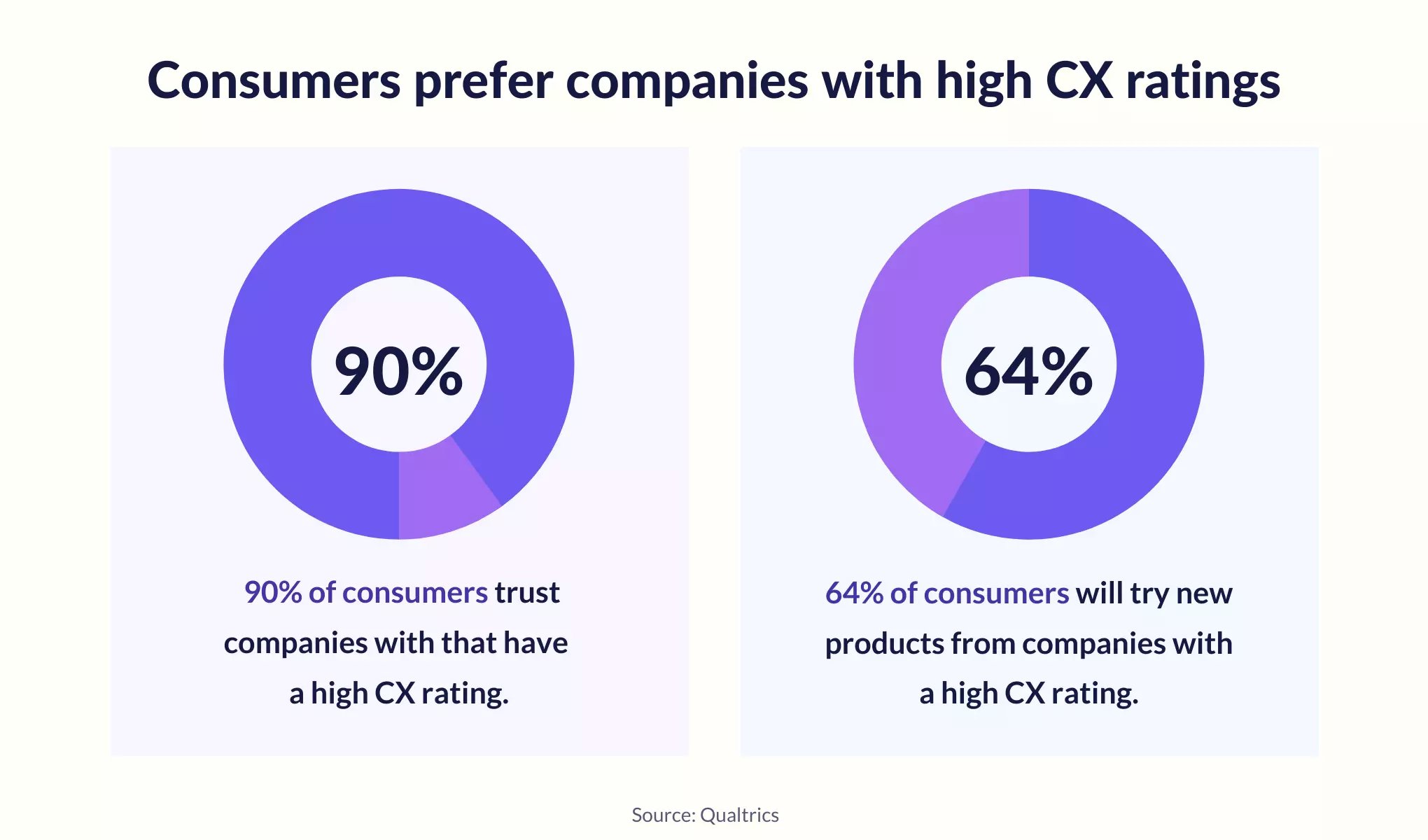
As you can see, customer loyalty lies with companies that care about them.
If you’ve had customer service on the back burner for a while, now’s a good time to place it front and center. To help you level up, we’ve rounded up the top customer service best practices.
In this article, we’ll unpack how you can build a customer-focused culture, elevate your customer support experiences, and go the extra mile to make customers happy and enjoy higher retention rates.
Table of Contents
- Building a customer-centric organization from the ground up
- Good to great: Best practices for stellar customer support
- The extra mile: Customer service that sweeps users under their feet
- Wrapping up
Building a customer-centric organization from the ground up
Here are some of the ways you can build a customer-centric organization that goes above and beyond to delight customers each time.
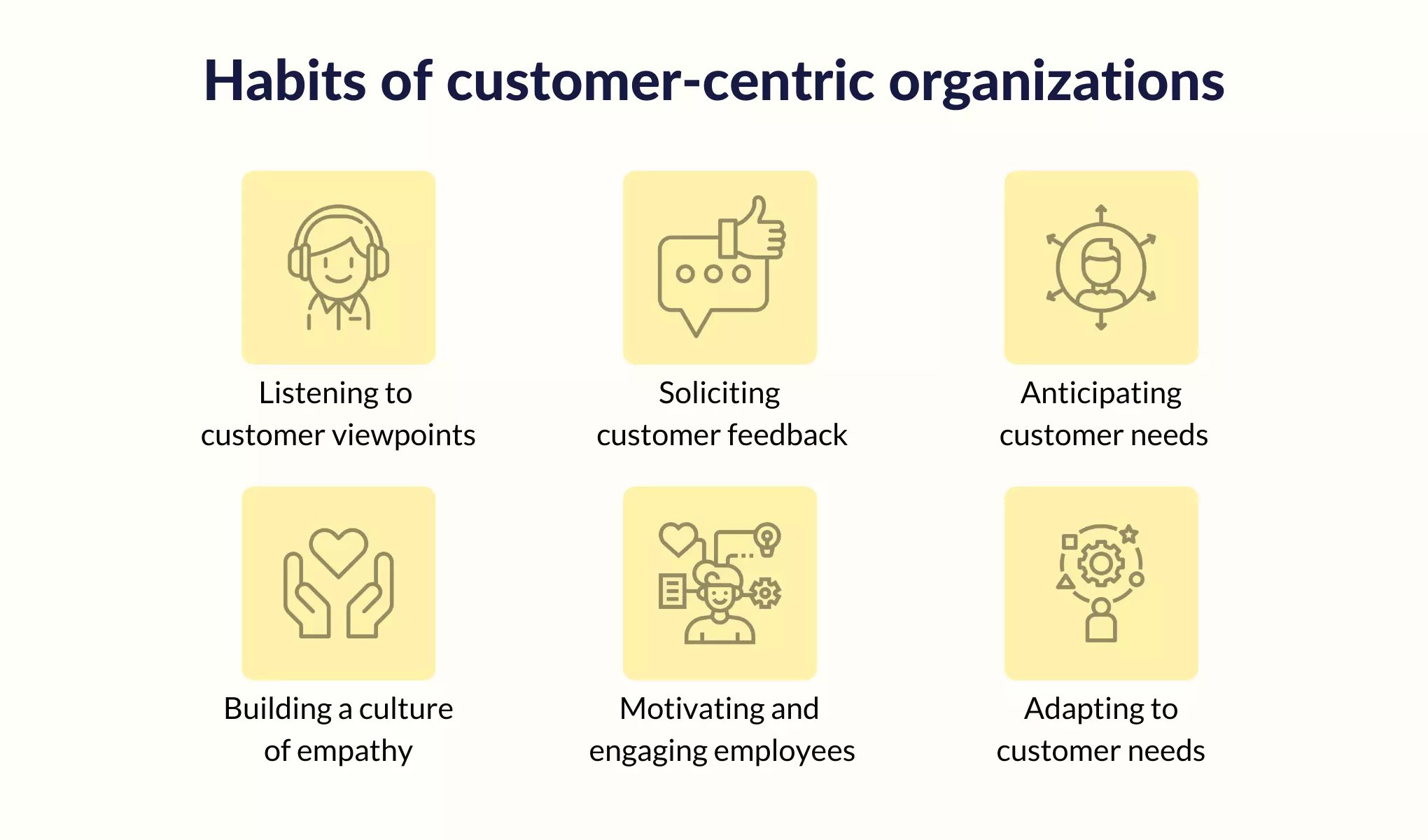
Make customer service a company-wide priority
The job of delivering a great customer experience shouldn’t simply belong to your customer service agents. Sure, they’re the face of your company and are a part of most customer interactions, but managing customer relationships should be a company-wide goal.
Right from the CEO to the marketing team to the human resources department, great customer experience must top everyone’s priority list. Only then, no matter what you do — designing a new logo, launching a product, sending out your weekly newsletter — it will reflect your commitment to customer happiness.
How do you foster a customer-centric culture? Jeff Bezos, CEO of Amazon, famously keeps an empty chair in every Amazon meeting. As you may have guessed, this chair signifies the customer, the most important person in the room.
This is a good way of metaphorically indicating the importance of the customer, but there are a few tangible steps you can take too.
- To help your team empathize with customer issues and anticipate their needs, share customer feedback on a company-wide bulletin.
- Make customer surveys and data available to everyone, so they can see exactly where there is scope for improvement.
- If possible, allow members from each team to do customer support at least once a week. You can schedule this using employee work schedule templates for convenient tracking. It will help them connect with people who use your product.
- Facilitate direct contact with customers by way of sales calls, social events, and conferences.
- Make customer-centricity a criterion for hiring, no matter what the role is. During the interview process, ask questions to gauge how tuned the person is to customer needs. This will ensure every new recruit understands the importance of customer service.
Keep a constant tab on customer requests, everywhere
There are so many ways for customers to talk to you — and about you — social media, blogs, review sites. If you want to keep a pulse on what customers think about, you’ll have to keep a tab on the chatter around your brand — all over the web.
A social listening tool such as Mention can help you keep track of any word about you on the internet. Once you’ve found a piece of feedback about your brand — good or bad — make sure you respond to it.
If it’s a good review, thank the customer for their valuable business. If it’s a complaint, reply to it as gracefully as possible and make sure the issue is resolved at the earliest.
Companies such as Slack keep a track of new feature requests and feedback about the app on Twitter (they call them #beeftweets). Often, these are little things the company can fix, but it gives their customer service a big boost.
Make it simple to reach you
There will be instances when your knowledge base or FAQ section won’t be enough and the customer might need to speak to you. Thus, be sure to provide them with an omnichannel customer service experience. Live chat, email, social media, phone, IVR menu, include as many means as you can possibly handle at a time. If you do include a live chat option, make sure your team is present at all times to monitor it.
When a customer calls you, don’t make them listen to an endless automated message. It might be tempting to add your latest features, benefits, and offers as part of the automated message customers hear when they call you.
Remember, distressed customers, are rarely in the mood for advertising. All they want is a resolution for their problem.
If customers email you, attempt to keep your response times to half of what you promise on your website. Make email templates for common queries, so you don’t have to waste time typing fresh replies each time.
Social media is increasingly becoming a preferred way for customers to reach their favorite brands. First, set up active social media accounts on platforms such as Facebook, Twitter, Snapchat, and LinkedIn. Second, be quick in replying to queries and resolving issues. Finally, remember, every interaction you have with customers on social media is public. So, it’s best if your replies reflect humility, wit, and your brand’s personality.

Make sure your self-service tools are in place
“I love talking to customer service executives,” said no customer ever.
In fact, customers would rather solve problems on their own than write or speak to you. To empower them to do this, make sure your self-help tools are up to snuff. This includes portals such as a knowledge base, FAQ section, pricing page, and chatbots.
Highlight your most popular FAQs and use video, audio, and screenshots where necessary. To help customers easily navigate your help pages, include a search bar and tag your pages appropriately.
If you have the resources, you might want to include a public customer service portal on your website. Here, a customer can post their queries and receive answers from your team members and also other customers. This will help you save time and benefit other customers too.
Recommended Reading

Empower your employees
Every organization onboards new customer service representatives the same way: a nod to conversation basics, a playbook for common support queries, and a quick tour of their tool stack. Customer-focused companies? They empower employees to do what’s best for customers.
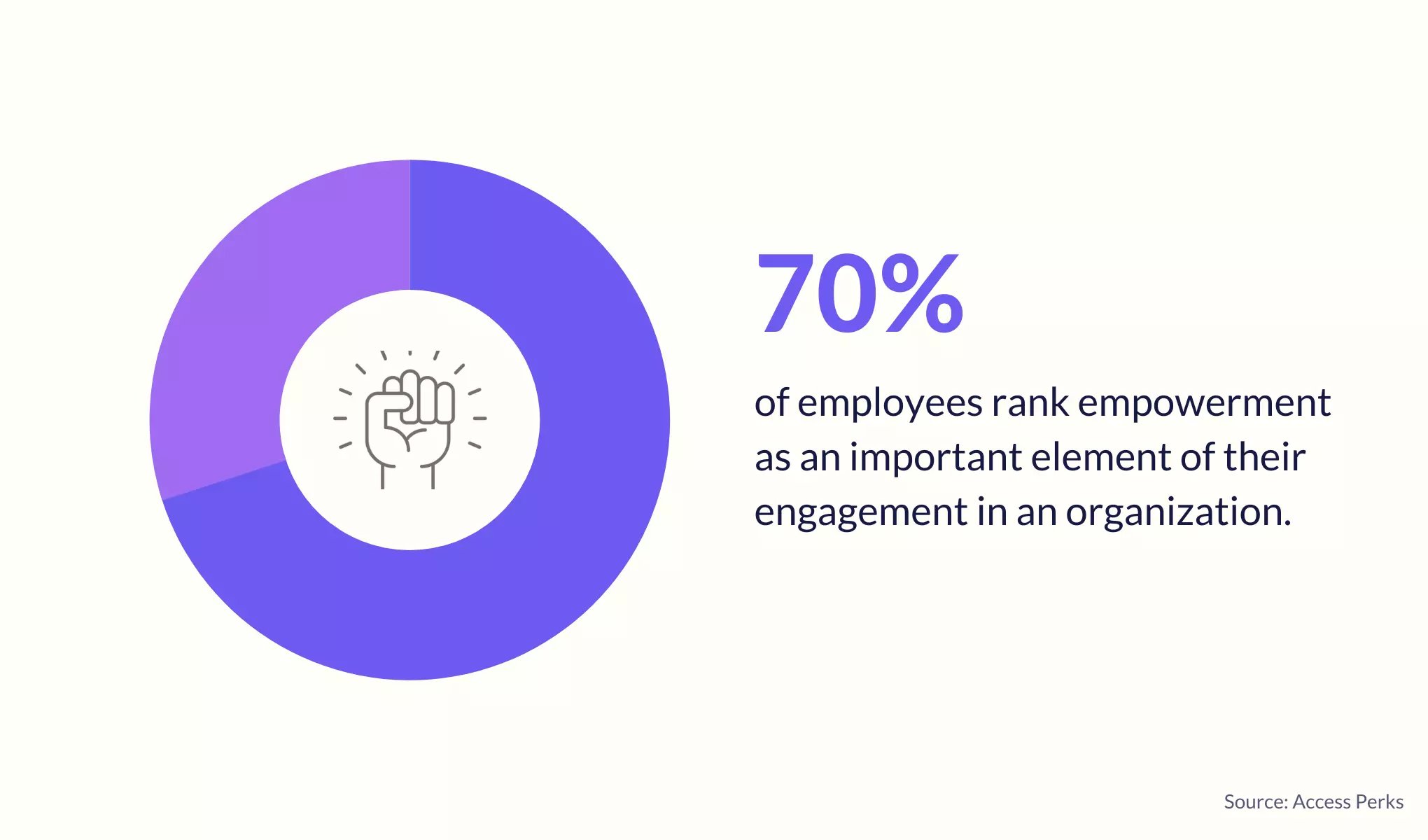
Here’s a personal account of why employee empowerment is crucial to customer experiences. One of my recent online purchases failed to deliver in the stipulated time. I’d already paid for it, so I reached out to support demanding a refund. As it turned out, it was the fault of a third-party seller, who did not ship the item in time. The question was: who would give me a refund, the seller or the platform?
Another customer rep would probably have asked me to wait, while they consulted with their superiors about the issue. They’d likely ask questions, put me on hold, and generally test my patience. Not this rep though. They offered me a quick refund, no questions asked. In a span of ten minutes, I went from an angry customer to a happy advocate of the company.
Support staff with autonomy use their best judgment to make the right call. Their brief is simple: the customer and their needs above all else.
To help employees develop a sense of how far they can go to appease customers, it helps to go over multiple scenarios. One way to do this is by playing training games.
Take a look at how the American Association of Homes of Aging trains workers of retirement homes. They play a board game called, The Game of Aging Concerns. It consists of cards with common problems that aging home members might face. For instance, one card reads, “A 72–year-old man who is intoxicated walks into the dining room and acts disruptive.” Players must read the cards and describe what they would do when faced with that situation.
For remote teams, tools such as Lessonly can be a boon. The app allows you to assign practice activities to employees such as composing emails, chat replies, and screen recording. You can also test how employees handle tickets and deal with different situations, based on criteria such as brevity and clarity.
Such simulation activities help prepare employees for wide-ranging situations and handle customer requests confidently.
Recommended Reading

Good to great: Best practices for stellar customer support
Now that we’ve gone over the ways in which you can build a customer-centric company, let’s look at the best practices needed for excellent customer service:
Make bad customer experience an opportunity to impress
It’s fairly easy to deal with customer queries, but it might be tricky to deal with a harrowed customer. Don’t get disheartened if you get too many of these, in fact, use them as an opportunity to woo the customer. A simple framework by Disney, called H.E.A.R.D, should do the trick.
- Hear: Sometimes, all a customer wants is to vent their frustration. So, even if their complaint seems unfair or it isn’t your fault, listen to them. Be sure not to interrupt with a justification or an apology.
- Empathize: After hearing what the customer has to say, express that you understand their plight and would react the same way if you went through a similar experience. Empathy goes a long way in building trust with the customer and helping them remember your brand in a positive light.
- Apologize: Even if the customer’s tone is unreasonable, or their complaint is unjustified, do apologize to them. At the end of the day, a customer spends precious time and money on your product and deserves respect. An apology shows the customer you care and are willing to improve.
- Resolve: An apology is not enough, of course, and you also have to resolve whatever issue the customer is facing. Your website could be malfunctioning or the customer’s payments may not be processed or your app breaks down. Either way, try to resolve their problem as soon as possible. If you need to transfer them to another department, do it in a frictionless way. Don’t make the customer wait endlessly or add more steps for them to follow. And do not, under any circumstances, keep the customer waiting for days on end for a resolution.
- Diagnose: Once their issue is successfully resolved, thank the customer for their patience and tell them you look forward to serving them again. Next, diagnose what went wrong in the first place. Was it a bug in your system? Was it a constantly requested feature? Did they not find your service fast enough? No matter what, make sure to bring it to the notice of the concerned team and fix it. A large part of customer support is not simply dousing fires, but also making sure they don’t arise in the first place.
Recommended Reading

Communicate in a positive and clear way
The way you talk to customers makes a big impact. This might not be a revelation, but negative language can stress them out. On the other hand, the positive language will reaffirm their faith in your brand and put them at ease.
If a customer asks a question about your product and you’re not sure of the answer, you might end up saying, ‘I don’t know Sir, please speak to so-and-so”.
A better way to phrase this would be, ‘Great question, Sir. My colleague XYZ will be able to help you with this.’
No matter what the query, it is best to avoid negative words such as don’t, can’t, and won’t. It might help to have a playbook handy with common situations and how to handle them without using negative language. This will help your team be on the same page.
Recommended Reading

Now, just because you have a playbook with phrases to use doesn’t mean you sound automated and formal. As far as customers are concerned, your tone plays as important a role as the words you use. Thus, you want to keep it casual and let your natural personality seep into your conversations.
For instance, when transferring a call, avoid saying, “Your call is being transferred.” This sounds rather stilted and formal.
Instead say, “Hey Mark, I am transferring your call to the billing department, where my colleague Stacy will help you out.”
Use the right tools
This might sound like a no-brainer but a lot of businesses tend to skimp on it. They believe good ol’ Gmail is good enough for teams to manage the support@ inbox. But when customer queries begin to pile up, and worse, slip through the cracks, only then do they realize the value of a customer support software.
Meet Hiver. It helps your team assign customer live chats and emails to the right team member – follow up on customer queries – keep track of whether a query has been solved – and send customer satisfaction surveys.
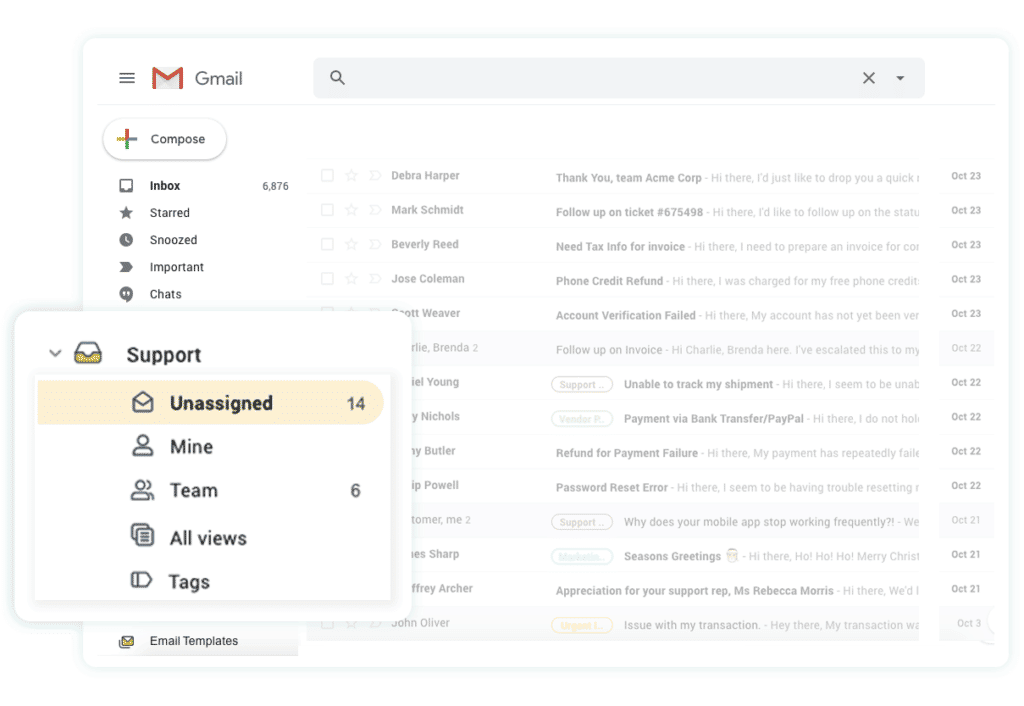
With analytics, you can see which emails take the longest to reply to, which team members need more coaching, and how quickly you respond to customer requests.
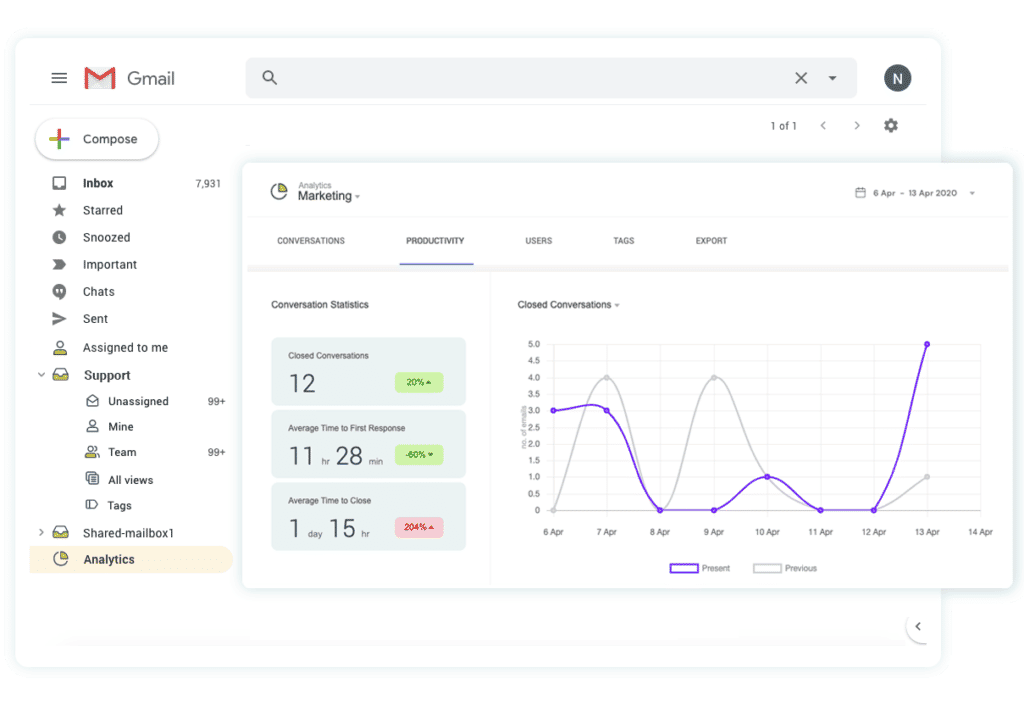
And in case you run a restaurant, check out these great tech tools for restaurant customer feedback.
Recommended read: 60% professionals see value of using AI tools for customer service. Read the full report here.
Listen, listen, listen
Much emphasis is placed on how to speak to customers, but another key skill for customer support representatives is listening.
Active listening helps support employees build empathy for customers, understand their problems, and reduce chances of miscommunication.
Paying attention to how customers speak about your product also helps to collect valuable insights for marketing your product.
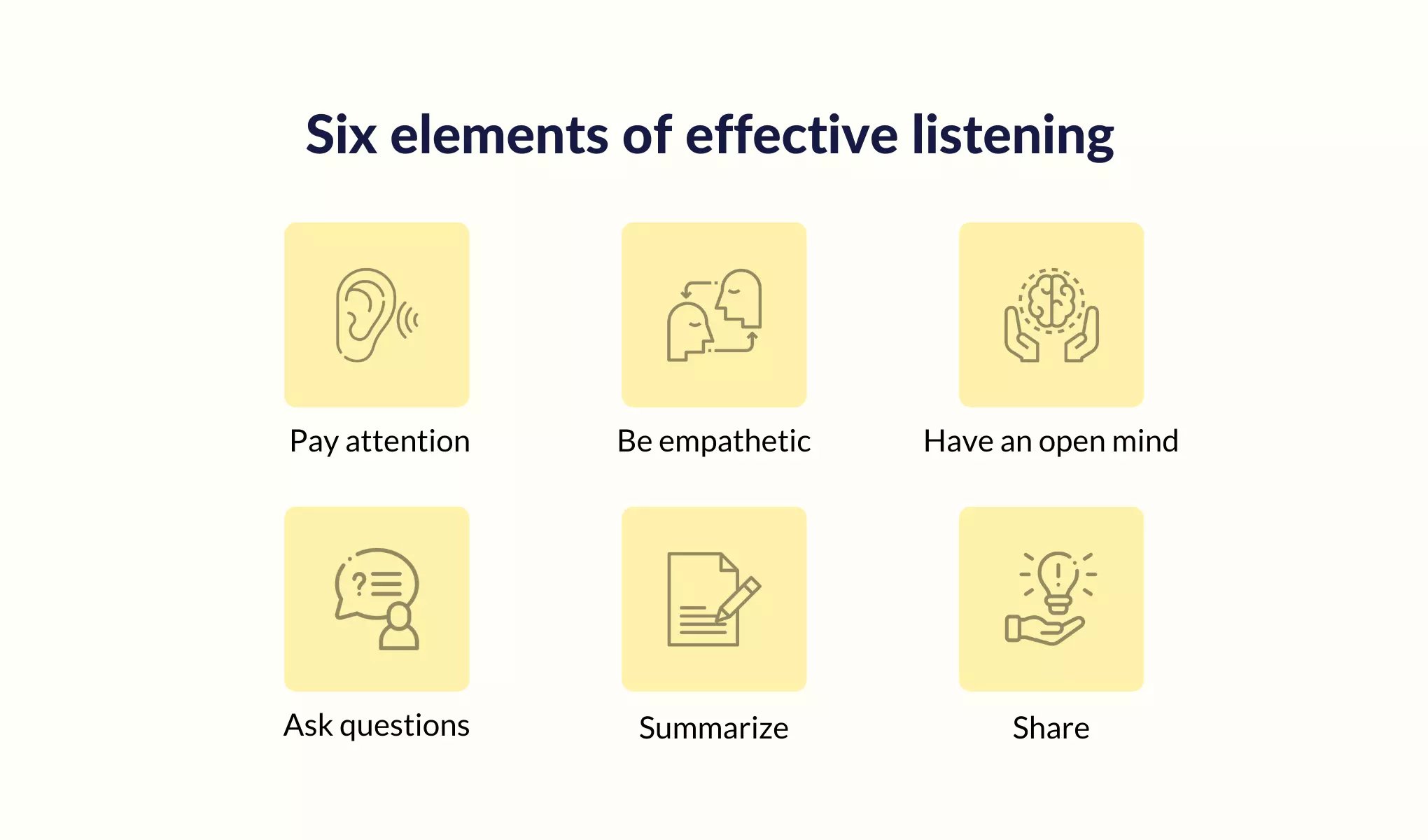
Here’s how you can harness the power of active listening for customer support:
- Make affirming statements: Customers can’t see you nodding your head on a phone call. Make short statements such as “okay”, or “uh huh” to let them know you’re listening.
- Take notes: A customer may be facing a particularly complex issue. To avoid missing important info, take quick notes about the issue. Writing down the exact words of a customer is also a great way to liven up marketing copy, and provides useful feedback for engineering teams to work on.
- Repeat what you hear: To ensure you’ve understood the issue, confirm it with the customer.
- Don’t justify: It’s tempting to think of retorts and counter-arguments while an angry customer explains their issue. Needless to say, this is a recipe for disaster. You’ll only come off as callous and rude.
- Ask appropriate questions: Instead of formulating retorts, your time is better utilized thinking of followup questions. The better you understand an issue, the faster you can provide a resolution.
In customer support (and life),listening well can help you soothe many furious tempers and turn around unpleasant situations.
Improve resolution times
Resolution time is an all-important KPI that determines the efficiency of customer support teams.
In a customer service benchmark study by SuperOffice, 62% of customers complained they had to repeatedly contact companies to get their issue resolved. Unsurprisingly, 65% of these customers were likely to share their harrowing experiences on social media and other communities.
The study also found that a meager 20% of companies are able to resolve customer email requests in the first attempt. If you’re among this minority, bravo!
However, if you’re struggling like most companies to deliver speedy resolutions, here are some pointers to help:
- Use internal communication tools: Support representatives might need other team mates to jump in on customer queries. Often, this involves juggling multiple external apps, or forwarding email threads from one inbox to another. A saner solution? Use an internal communication tool so you can discuss all customer requests in one app. An email help desk can help facilitate this.
- Facilitate synergy between departments: Customer support requests overlap with different departments such as finance, engineering, billing, and marketing. To save time and solve tickets faster, it’s best to have a point of contact from each department working alongside support.
- Ask the right questions: Not all customers can explain the full scope of their problem in the first email. In this case, the customer support rep must not assume anything. Be sure to ask probing questions and tease out the problem. This will help you provide a quicker resolution.
- Answer the customer’s question: One of my personal pet peeves as a customer is when companies redirect me to documentation, instead of answering my question. Consider this: if a customer has taken the trouble to reach out to support, it’s clear they were unable to solve the problem on their own. Why not simply answer their question in your reply, instead of redirecting them? Better yet, do the task they were unable to do (sign up, update the app, complete a payment),and they’ll be eternally grateful.
- Assign tickets based on your team’s expertise: Over time, different support team members develop expertise in different areas of your product. They might also have individual strengths you can tap into. For instance, if one of your reps has an engineering background, automatically assign all reported software bugs to them.
Recommended Reading

The extra mile: Customer service that sweeps users under their feet
Here are tips to help you go that extra mile to delight your customers:
Personalize customer experience – Get to know your customers better
Personalization is the key to great customer experience. Where other services give them a cookie-cutter experience, you can give them exactly what they want and sweep them off their feet. Take Netflix, for example. The company perfectly captures user intent by closely monitoring their interests and serving them exactly what they want to watch. They’re otherwise super cool on chat support as well.

Another company acing ecommerce personalization is Amazon. The company keeps track of a customer’s purchase history, and gives them products and offers related to these actions. The more you personalize a customer’s experience, the more likely they are to remember your service.
While the two examples above are for online services, you can personalize customer experience as an offline service too. Here are a few ways to add that golden touch to your services, no matter what type of business you are:
- Track customer activity: Whether you’re running an e-commerce store or a brick-and-mortar shop, it pays to keep a tab on what they buy on a regular basis. You can then use this data to personalize your customer journey. The next time they visit your store, show them the exact products that they’d like.
- Create customer profiles: This is again possible to do online as well as offline. A customer profile, with their name, address, occupation, and more, helps you personalize the experience in a variety of ways as we’ll see below. Depending on the type of product you sell, you can also ask customers to include their preferences while creating this profile. For instance, if you sell baby products, you can ask them the age and sex of the baby, so you can present them with relevant offers and products, from time to time.
- Segment email subscribers: Remember the customer profiles you created? This is where you’ll want to ask for their email too. Regular email updates are a great way to keep your product on the customer’s mind, even if they aren’t actively buying at the moment. To make this experience personal, you’ll want to segment customers based on those who frequently open your emails, their age, location, and so on. This will ensure your emails are relevant and timely.
- Store information to save time: Again, customer profiles will help you here. Using the pre-stored address and billing information, you can provide customers with a quick and smooth checkout experience.
- Provide great after-sales service: It’s easy to send a thank-you email after a customer has purchased from you. But if you truly want to stand, think outside good old email. Why not send a handwritten thank you note to your customers? If that does not seem viable, you can also use other, more personal platforms such as Snapchat, Whatsapp, and Instagram to thank customers for their business.
‘Wow’ moments – go out of your way to help customers
Meeting a customer’s expectations is good, but exceeding them? Now that’s an experience they won’t forget. Small acts of consideration will not only win you brownie points with a customer but also win you some love on social media.
Take the example of Gaylord Opryland Hotel. A regular customer of the hotel wished to find the alarm clock the hotel used, as it helped her sleep better at night. When she failed to find one, she tweeted to them. Much to her delight (and that of her Twitter followers),the next time she visited them, they had two clocks in her room — one for her to take home.

Here are some ways you can add that extra layer of care for your customers:
- If you sell an online service/product, send your best customers an offline gift once in a while.
- When your customers submit an unusual request, such as asking for home delivery when you don’t normally offer them, fulfill it and make their day.
- Customers might sometimes present you with impossible deadlines, but if you can fulfill them, that’s a great way to wow them.
- Provide genuine customers with a replacement or refund if they’re unhappy. This may not always be possible or viable, but once in a while if a customer says they didn’t like your food, or your product disappointed them, you can always act on their feedback.
- Mark special occasions such as birthdays and anniversaries. You’ve probably witnessed a rendition of ‘Happy Birthday’ at your favorite restaurant or mall. Even if you’re not into the hospitality business, you can always send special greetings to your customers by email or post.
Random acts of kindness will help customers remember your brand long after they’ve used your service.
Creatively seek feedback
You know those social media customer complaints that single-handedly reduce the morale of your employees? You’d be relieved to know less than 4% of your angry customers might actually take this route to let you know about their experience.
Should you honestly be relieved, though? Because 91% of angry customers will never do business with you again. Quiet customers are not necessarily happy with your service. To uncover hidden insights about your service, it pays to proactively seek out customer feedback.
One way is to capture customer feedback right after they experience a particular service. For instance, the Marriott Corporation has a 24-hour “hotline” in their hotels where customers can call and complain.
Similarly, the British Airways installed VideoPoint booths at Heathrow Airport in London, so travelers could tape their reactions on arrival.

You can also incentivize customers with freebies and gifts to offer feedback, like Maine Savings Bank did. They offered $1 for every person that wrote a letter with suggestions for improvement. In a year, they receive 500 letters with customers’ ideas.
While these are examples of offline services, online companies can also get creative about seeking feedback and criticism from customers. Apart from offering rewards and add-on features, they can use one-question surveys at the end of complex tasks to gauge customers’ experience with the product. In fact, close to 40% of customer service teams use customer surveys to collect customer feedback, according to Hiver’s Customer Service Benchmark Report.
Overdeliver on your promises
Stew Leonard’s is a retail dairy store in Norwalk, with a suggestion box to gather customer feedback. One evening, the owner found the following complaint in the suggestion box, “I made a special stop on my way home from work to buy chicken breasts for dinner, but you’re sold out. Now I’ll have to eat a TV dinner instead.”
Another dairy store would probably fold and chuck the note aside, but not Stew Leonard’s. The minute he read the letter, a Perdue chicken truck pulled up near the store. Not wasting a moment to delight a customer, Stew Leonard’s sent a two-pound complimentary fresh chicken breast to the customer’s house, just in time for dinner.

Stew Leonard’s may be a dairy store, but by going above and beyond their core promise, they made a customer’s dinner special and won his loyalty.
You don’t have to move mountains to deliver more than your core product promise. A few simple ideas you can implement right away:
- Respond to customers in half the time your website mentions
- Roll out customer-requested features on an urgent basis
- Inform customers when you implement their feedback
- Offer a refund for bad customer experiences
- Extend trial periods for customers, on a case-to-case basis
Wrapping up
Savvy businesses look at customer service as an opportunity, not as an expense. Great customer experiences not just make them your loyal followers, but also your biggest brand ambassadors. We hope the list above helps boost your customer service efforts.

































